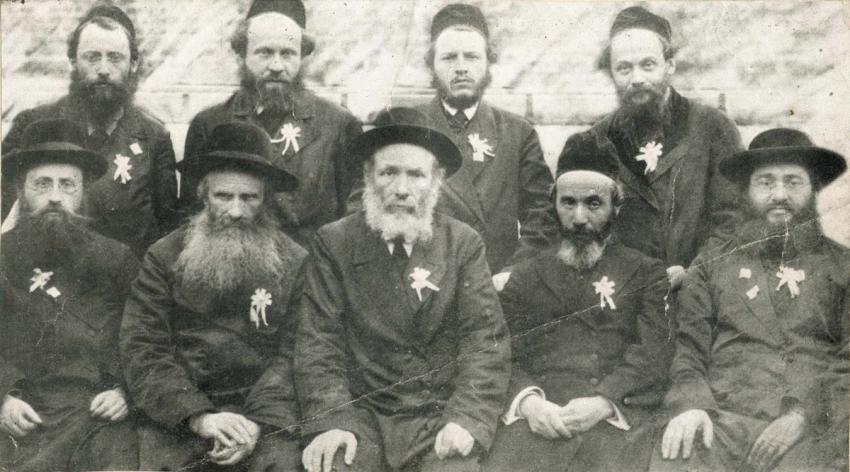Before the outbreak of World War II, some 4,800 Jews lived in Staszow, constituting more than half the town’s population. Most of them earned a living as artisans and in trade. There were two Jewish banks, as well as charitable and welfare organizations.
Between the two world wars, Zionist activity in Staszow reached its peak. Mizrahi was the first Zionist party in Staszow, and remained one of the largest and most active amongst the many Zionist parties in the town. Members of the Mizrahi party were very involved in the fields of education and culture. Amongst other things, they supported the community Talmud Torah, established a modern heder offering both Jewish and secular studies, and opened courses in Jewish studies for the community’s girls, nearly all of whom studied at Polish schools. In Staszow there was a branch of the Zionist Organization (Histadrut Zionit), and the Zionist parties, youth movements and Hachshara (pioneer training scheme) kibbutzim were active there. In addition, Staszow boasted a large branch of the Bund and the Agudat Yisrael party.
The Germans occupied Staszow in 1939, and confiscated Jewish shops, artisan workshops and other property. A Judenrat was established, the Jews were forced to wear an identifying armband, and Jewish refugees from other cities were brought there. The recruitment of forced laborers from amongst the Jews of Staszow began in May 1940, and by September the same year, hundreds of Jewish men had been seized for forced labor. A ghetto was established in Staszow in June 1942, at which time 100 young boys were taken from the ghetto, ostensibly for labor, and murdered. In November 1942, the Gestapo and SS deported 6,000 ghetto inhabitants to the Treblinka extermination camp, with the help of Ukrainian and Polish policemen. Some 200 Jews were murdered in the town itself during the Aktion. In January 1943, hundreds more Jews were deported to the extermination camps of Belzec and Treblinka. During the ghetto's existence, some 1,000 Jews attempted to escape, but the vast majority died within a short time.
This photo is one of a collection of 113 photographs of Staszow, taken before, during and after World War II.
Yad Vashem Photo Archives, 737/54







